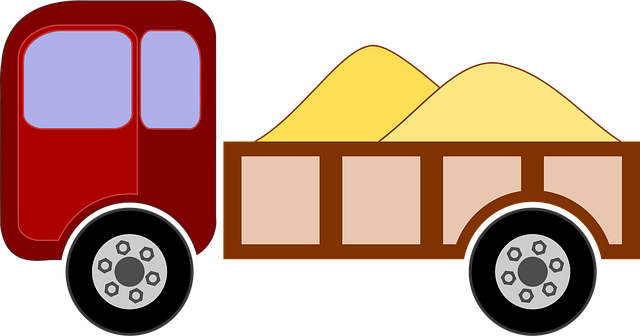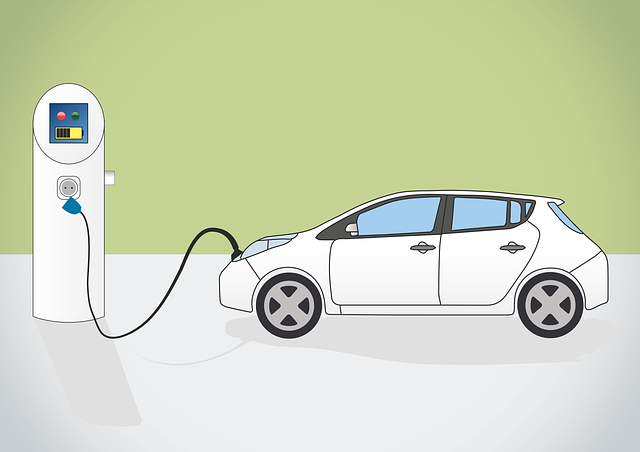Registering a car in California involves understanding specific requirements and gathering essential documents. This comprehensive guide walks you through the process step-by-step, ensuring a smooth experience. From confirming your vehicle’s identity using a DMV VIN verifier to paying registration fees, each section provides crucial information. By following these clear instructions, you’ll efficiently navigate the process of registering your car in California.
- Understand California Car Registration Requirements
- Gather Necessary Documents for Car Registration
- Visit Your Local DMV and Complete Application
- Verify Vehicle Identification Number (VIN) with DMV
- Pay Car Registration Fees and Receive Plate
Understand California Car Registration Requirements

Before registering your car in California, it’s crucial to understand the state’s specific requirements. The California Department of Motor Vehicles (DMV) mandates that all vehicles operated within the state be properly registered and inspected. This includes a thorough examination of the vehicle’s identity, often facilitated through a process called a VIN (Vehicle Identification Number) verification. A reliable DMV vin verifier or mobile vin inspection tool can help ensure your car meets these standards by confirming its authenticity and history.
California uses this VIN inspection to prevent the registration of stolen vehicles and to maintain accurate records, ensuring road safety for all drivers. To register your car, you’ll need to visit a local DMV office with your vehicle’s necessary documents, including proof of ownership, current insurance, and a valid driver’s license. Additionally, some counties in California may require a smog test or other environmental inspections as part of the registration process, so it’s essential to check with your local DMV branch for specific guidelines.
Gather Necessary Documents for Car Registration

Before you start the registration process, it’s crucial to gather all the essential documents required by the California Department of Motor Vehicles (DMV). This includes your vehicle’s registration certificate from the previous state, a valid driver’s license, proof of insurance, and identification documents such as a passport or state-issued ID. Additionally, you’ll need the Vehicle Identification Number (VIN) of your car—this can usually be found on a plate attached to the dashboard or under the hood. For added convenience and accuracy, consider using a mobile VIN verification service to instantly capture and verify this critical information.
One key step is ensuring your vehicle’s history is clean; a mobile VIN inspection can help by providing detailed vehicle information, including any accidents or outstanding issues, directly from your smartphone. By having these documents ready, you’ll streamline the registration process at the DMV, making it faster and less stressful for you.
Visit Your Local DMV and Complete Application

To begin the process of registering your car in California, start by visiting your local Department of Motor Vehicles (DMV) office. This is where you’ll complete the necessary application and initiate several crucial steps. Bring along all required documents, including proof of ownership, vehicle identification number (VIN) verification, and any other paperwork specific to your situation.
One efficient way to obtain a VIN inspection is through a mobile vin verifier. Alternatively, many DMV offices now offer online services that allow you to submit your application digitally. Ensure your vehicle meets all safety standards and regulations before proceeding. This process will help streamline the registration, making it easier for both you and the DMV staff.
Verify Vehicle Identification Number (VIN) with DMV

Before proceeding with the registration process, it’s crucial to ensure your vehicle’s authenticity by verifying its Vehicle Identification Number (VIN) with the California Department of Motor Vehicles (DMV). This step is a critical part of the car registration checklist, as it helps protect against fraud and ensures you’re providing accurate information. You can easily do this through the DMV’s online tools or by visiting a local field office.
A reliable method for verification is to use a mobile vin verifier app, which allows you to quickly check the VIN’s validity and accuracy from the comfort of your smartphone. This technology enables a thorough vin inspection, cross-referencing the provided number with the DMV’s records to confirm ownership, identify any outstanding issues or recalls, and ensure the vehicle matches the details in the registration paperwork.
Pay Car Registration Fees and Receive Plate

After completing your vehicle’s registration application at the California DMV, the next step is to pay the required fees. These include a registration fee and a vehicle license fee, which vary depending on your vehicle’s type and age. You can pay online, by phone, or in person at any DMV field office. Once the payment is processed, you’ll receive your vehicle’s license plate.
For added convenience, many Californians opt for a mobile vin inspection or mobile vin verifier service to complete this process. These services allow you to verify your Vehicle Identification Number (VIN) and get your plates without visiting a DMV in person. This can save time and ensure a smoother registration experience.
Registering a car in California is a straightforward process that requires understanding the state’s requirements, gathering essential documents, and visiting your local DMV. By following these steps—from verifying the Vehicle Identification Number (VIN) with a dmv vin verifier to paying registration fees—you can ensure your vehicle is legally registered and ready for California’s roads. This guide has provided the necessary information to make the process efficient, so take a dive into the details and get your car registered today!
